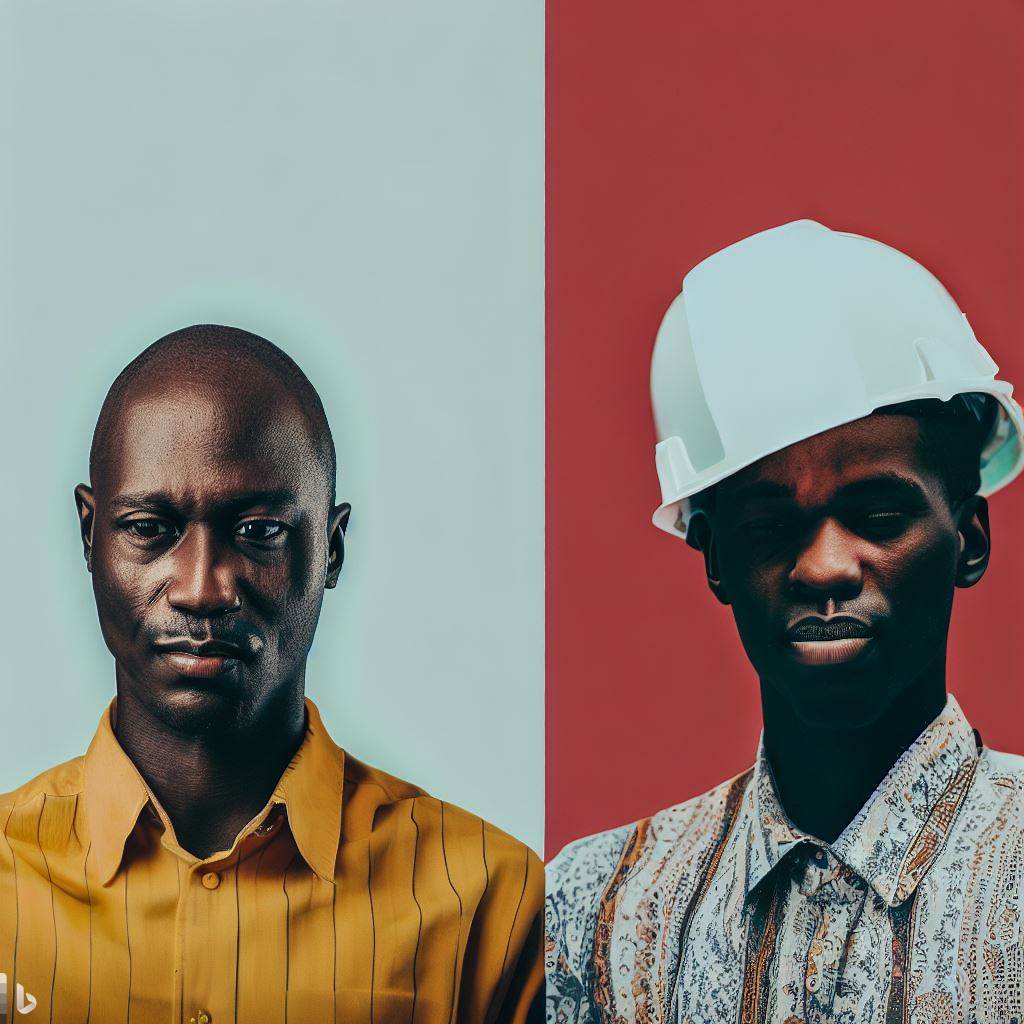Introduction
The architecture profession in Nigeria is an important sector that has contributed to the physical development of the country.
It involves the planning, designing, and construction of buildings and other structures. It is a profession that has evolved over the years, with changes in technology, culture, and society.
Exploring the evolution of the architecture profession in Nigeria is crucial for several reasons. Firstly, it allows us to understand the historical context of the profession and how it has developed over time.
This helps us appreciate the value of the profession and its significance in the development of the country. Secondly, it enables us to identify areas that need improvement and opportunities for growth in the profession.
Finally, it helps us to appreciate the cultural diversity that has influenced the development of the profession in Nigeria.
This blog post aims to explore the history of the architecture profession in Nigeria, its evolution and the factors that have influenced its development.
We will look at the various architectural styles, materials, and techniques used in Nigeria and their contribution to the profession.
We will also consider the impact of colonialism and globalization on the profession in Nigeria, as well as the role of architecture in sustainable development in the country.
Through this exploration, we hope to gain insight into the past, present, and future of the architecture profession in Nigeria, and its importance in shaping the physical environment and human experiences in the country.
Read: Working Conditions for Aviation Professionals in Nigeria
Early History
Pre-colonial architecture in Nigeria
The pre-colonial era in Nigeria was characterized by diverse architectural designs which largely depended on the cultural and traditional beliefs of the different ethnic groups.
Building materials ranged from mud, wood, and thatch to stone and baked clay, and the designs were often influenced by factors such as geography, climate, religion, and social status.
Influence of Islamic and European architecture
Islamic architecture arrived in Nigeria in the late 14th century through the trans-Saharan trade and had a significant influence on the architecture of the Hausa-Fulani people of Northern Nigeria.
European architecture, on the other hand, was introduced during the colonial era and was influenced by neoclassical, Art Deco and Art Nouveau styles.
Emergence of indigenous architecture
Indigenous architecture in Nigeria began to emerge in the 1900s as a response to the impact of colonialism on traditional building practices.
This prompted architects and builders to start incorporating traditional elements and ideas into modern designs. This era saw the birth of architects like Demas Nwoko and Festus Adeniran.
Colonial Architecture and its impact on the Profession
Colonial buildings catered to British officials but created opportunities for indigenous involvement in architecture.
Nigeria’s architectural profession boasts a diverse history influenced by various cultures and styles.
From pre-colonial indigenous architecture to neoclassical, Art Deco, and Art Nouveau styles during colonial times.
The architecture profession evolves, giving rise to talented Nigerian architects shaping the country’s future.
Read: Understanding Safety Standards in Nigeria’s Aviation
Post-Independence
As Nigeria gained its independence in 1960, the architecture profession in the country continued to evolve with the establishment of various professional bodies.
One of such bodies is the Nigerian Institute of Architects, founded in 1960 to promote architecture through education and practice.
The government policies had a significant impact on the architecture profession in Nigeria. During this period, the government introduced the indigenization policy, which requires that foreign-owned businesses should be controlled by Nigerians.
This policy saw more Nigerians taking up leadership positions in various architectural firms in the country.
Another government policy that had an impact on the profession was the creation of the Federal Capital Territory (FCT) in 1976.
The FCT provided a new frontier for architects, planners, and engineers in the country. Many architectural firms secured contracts to design and build structures in the new capital city of Abuja.
The advent of technological advancements also had an impact on architecture in Nigeria. The evolution of Building Information Modeling (BIM) technology saw the integration of more advanced construction methods into architectural designs.
More architects in Nigeria began to leverage technology to create more sophisticated designs that meet contemporary standards.
With the increasing adoption of green technology globally, the architecture profession in Nigeria also saw a shift towards sustainable architecture.
Many architectural firms began to incorporate more eco-friendly materials in building designs. This trend has continued to increase, with more architects committing to sustainable architecture in the country.
In summary, post-independence Nigeria witnessed significant developments in the architecture profession.
The establishment of professional bodies such as the Nigerian Institute of Architects, government policies, and technological advancements all contributed to the evolution of the profession in the country.
As the world continues to advance, the architecture industry in Nigeria will continue to evolve to meet contemporary standards.
Read: Professional Growth Paths in Nigeria’s Aviation Sector

Current State of the Architecture Profession in Nigeria
Despite the challenges facing architects in Nigeria, there are still noteworthy contributions made by Nigerian architects in the global architecture industry.
There are also opportunities for growth and expansion of the profession in Nigeria.
Challenges facing architects in Nigeria
- Limited government support and funding for architectural projects.
- Difficulty in accessing affordable building materials.
- Inadequate infrastructure for construction and maintenance of buildings.
- Low wages for architectural professionals.
- Competition from unregistered architects and quacks.
These challenges make it difficult for architects in Nigeria to effectively carry out their duties and contribute to the growth of the industry in the country.
Read: Dissecting The Architect Registration Council of Nigeria
Contributions of Nigerian Architects to the global architecture industry
Despite the challenges faced by architects in Nigeria, there have been notable contributions to the global architecture industry by Nigerian architects.
- Dr. Demas Nwoko was the architect behind the famous National Theatre in Lagos, Nigeria.
- David Adjaye, a Nigerian-British architect, designed the Smithsonian National Museum of African American History and Culture in Washington D.C.
- Kunlé Adeyemi designed the floating schools in Lagos, Nigeria to provide education to children in flood-prone areas.
- Olajumoke Adenowo designed the civic center in Lagos, Nigeria, a building that has won many awards for its unique design.
These contributions have showcased the talents and creativity of Nigerian architects to the world, and have helped to elevate the profession in Nigeria.
Opportunities for growth and expansion of the profession in Nigeria
Despite the challenges facing the architecture profession in Nigeria, there are still opportunities for growth and expansion of the industry.
- Nigeria’s population is rapidly growing, and this means a high demand for housing and other architectural projects.
- The Nigerian government has unveiled plans to embark on large-scale infrastructure development in the coming years, which will create more opportunities for architectural professionals.
- The Nigerian Institute of Architects (NIA) is working to promote the profession and protect the interests of its members through advocacy and lobbying.
- Advancements in technology have made it possible for architects in Nigeria to design and construct buildings more efficiently and effectively.
- There is a growing trend towards sustainable architecture in Nigeria, which presents opportunities for architects to incorporate eco-friendly designs in their projects.
Architectural professionals in Nigeria can contribute to industry growth, provide quality services, and enhance skills.
Nigerian architects make notable global contributions despite facing challenges. Opportunities for growth exist, enabling industry and national development.
Read: Pioneers and Influencers in Nigeria’s Aviation Industry
Conclusion
In the Nigerian built environment, architecture wields influence through colonialism, globalization, and modern technologies.
Challenges include inadequate infrastructure, poor remuneration, and government and societal undervaluation.
With rising demand for sustainable and innovative design, Nigeria’s architectural future looks promising.
Architects must adapt to changing trends and technologies to stay competitive globally.
It is essential for the government to collaborate with architects in addressing the challenges facing the profession.
This includes creating enabling policies, investing in infrastructure, and recognizing the significant roles architects play in the development of the nation.
In fact, the evolution of the architecture profession in Nigeria is a story of resilience, innovation, and determination.
The journey so far has been remarkable, but there is still more work to be done to ensure that the profession reaches its full potential in contributing to the development of the Nigerian built environment.




